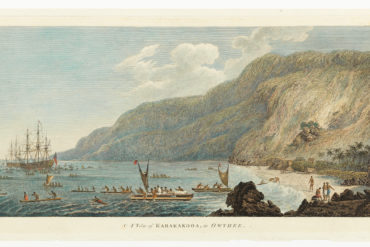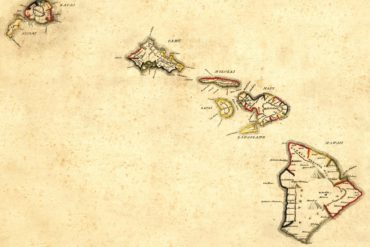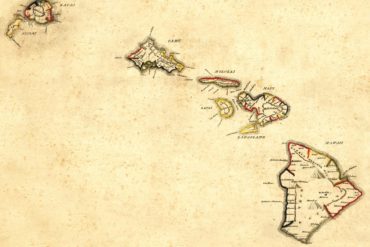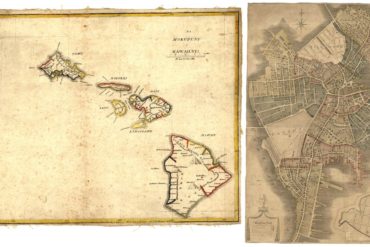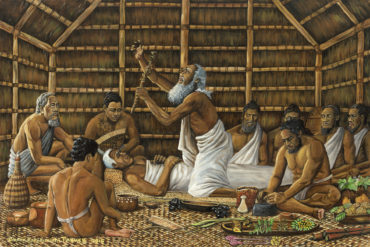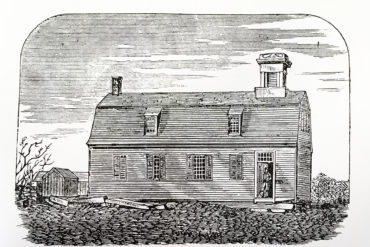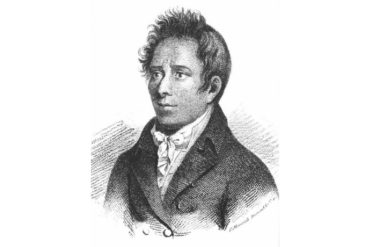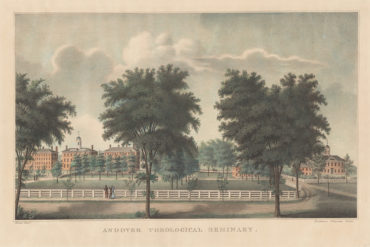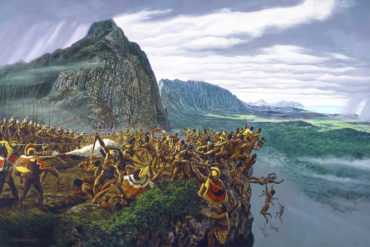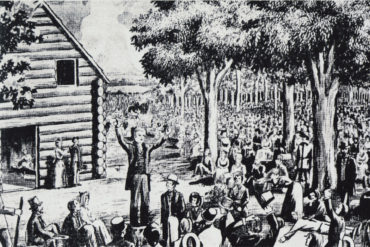Captain James Cook was a British naval officer and explorer who commanded three voyages to the Pacific. Privately, he carried orders from the Admiralty to claim any “undiscovered” Pacific islands for Britain, with an eye to assessing the islands’ natural resources.
Around 1,000 years ago, navigators from the Marquesas Islands launched an unprecedented voyage of discovery across the Pacific Ocean.
On October 23, 1819, a double-masted, 85-foot-long ship set sail from Boston Harbor, headed for the Sandwich Islands (Hawai‘i). in recognition of these events two hundred years ago, we take the opportunity to reflect on this complex history.
This first exhibit of Eia Hawai‘i: 1819 – 1841 explores the events in Hawai‘i and New England before missionaries first arrived in Hawai‘i in 1820. Within a period of fifty years, Hawai‘i had experienced a dramatic transition from geographic isolation to playing a pivotal role as a provisioning stop for growing Western trade and colonial exploration, a shift that profoundly impacted the indigenous culture and practices of the islands.
Kamehameha I died in May 1819, in Kamakahonu, Hawai‘i. Early on, the king had named his son, Liholiho, successor. But two powerful women – Ka‘ahumanu and Keōpūolani, both his widow – would demand new freedoms, igniting a struggle that toppled the ancient religion.
Faced with declining revenues for its global missions, ABCFM founded the Foreign Mission School in Cornwall, Connecticut, in 1816 as a way to proselytize at home and to boost donations.This boarding school aimed to educate non-Christian boys to become missionaries in their homelands.
Henry ʻŌpūkahaʻia played a pivotal role in inspiring the missionary presence in Hawai‘i. His avid embrace of Christianity, told in the best-selling Memoirs of Henry Obookiah, created a compelling vision of what the missionaries could accomplish in these far-off lands.
For missionaries, education was essential to both salvation and worldliness. Prominent Congregationalist ministers, such as Timothy Dwight and Edward Dorr Griffin, led schools and churches that stood at the forefront of spiritual revival during the Second Great Awakening.
On October 23, 1819, a double-masted, 85-foot-long ship set sail from Boston Harbor, headed for the Sandwich Islands (Hawai‘i). in recognition of these events two hundred years ago, we take the opportunity to reflect on this complex history.
From 1790 – 1830, a Protestant revival called the Second Great Awakening swept across America. The movement was a reaction to the loosened social bonds brought on by the nation’s westward expansion and beginning industrialization.

